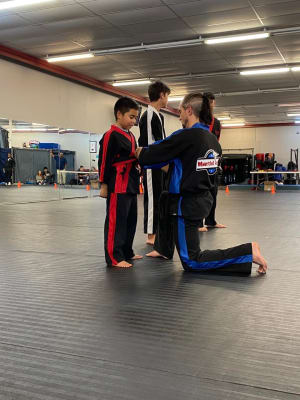
In its current form, karate is less than 200 years old however it has roots that date back thousands of years.
The art originated on the island of Okinawa and in its early form was heavily influenced by ancient Chinese martial arts, collectively known as kung fu.
The Beginnings of Karate History on Okinawa
The history of Okinawan Karate can be traced back to the late 17th century when a ban on weapons was imposed by the samurai rulers of Japan.
The exact evolution of karate history is lost due to the lack of information being written down which is unsurprising when taking into account the strict rules against subjects of the island learning martial arts.
This meant that all training by early masters such as Kanga Tode Sakugawa (pictured) and Sokon 'Bushi' Matsumura, had to be done in secret and as weapons could not be carried on the island, self-defence tended to revolve around empty handed techniques.
The earliest surviving written evidence of karate in Okinawa was a mention of the word Tode (the Okinawan name for the art) in the late 1700s. It was in reference to a visitor to the island from China named Kushanku who taught a form of kung fu and may have introduced the first version of the Shotokan kata kanku dai. Tode style blended with the martial arts already being cultivated on the island which was known as Te, meaning ‘hand’.
Te was popular in three cities in particular, Shuri, Naha and Tamarai. Each city had its own way of doing the martial arts and modern day styles reflect this; Shotokan and Shito-Ryu are mostly influenced by the style from the city of Shuri, that is Shuri-te, and to a lesser extent Tamarai-te. Goju-ryu on the other hand is more influenced by Naha-te.
Karate History and its Development into a World Martial Art
At the turn of the 20th century, Anko Itosu gained permission to end the shroud of secrecy for those who wanted to learn martial arts and began teaching Te in Okinawan schools. This led to further expansion by one of Itosu’s students, Sensei Gichin Funakoshi, who introduced the art to Japan in 1922.
Funakoshi made many modifications to the art to make it more accessible to the Japanese including changing the name and karate as we know it today was born. Towards the end of his life, Funakoshi was instrumental in forming the Japanese Karate Association (JKA) which set about making karate a world martial art by sending out its best instructors to teach it all over the globe.
Today, karate is practiced by millions of people right across the world and although the lines are often blurred between karate history facts and exaggeration's or legends, the contribution made by the old Okinawan masters and those that followed them should not be forgotten.
Article credits: Andrew Griffiths
#karate #mma #bjj #martialarts #jacksonvillenc #nc #onslowcounty #onslow #kickboxing #martialartsandmore

